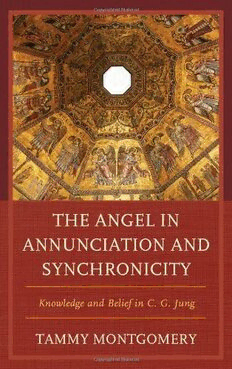
The angel in annunciation and synchronicity : knowledge and belief in C.G. Jung PDF
153 Pages·2013·6.315 MB·English
Most books are stored in the elastic cloud where traffic is expensive. For this reason, we have a limit on daily download.
Preview The angel in annunciation and synchronicity : knowledge and belief in C.G. Jung
Description:
Fear grips those who doubt that their existence has meaning, and the prevailing notion that humans are situated on a dot in the middle of a dark, cold universe leaves people shivering in cosmic insignificance. Many would argue that science and technology have separated individuals from God while others would say that people have lost their faith, and some would assert that God is dead. Many simply do not know what to believe. Today’s self-help industry is a testament to the search for meaning in an age of uncertainty and faltering religious structures. The truth is that technology and science now answer many of the questions that used to be left to God. This development has confounded people’s ability to integrate what is known today with what was once thought. The disparity between past and present beliefs may be observed in the concept of the angel. There are many who claim that any lingering belief in angels is merely the residue of imaginary or wishful thinking, and there are others who hold that angels (wings, halos, and harps) literally exist. How is one to reconcile such contradictory beliefs? C. G. Jung’s theory of synchronicity (meaningful coincidence) provides a vehicle for the exploration and possible reconciliation of such questions. Rather than echoing the skeptic who says angels cannot exist or the religious enthusiast who affirms their immanence, one might reframe the entire discussion. Like the biblical concept of annunciation, in which an angel delivers a heavenly message to an earthly individual, synchronicity defines the moment at which the eternal touches the temporal.
See more
The list of books you might like
Most books are stored in the elastic cloud where traffic is expensive. For this reason, we have a limit on daily download.
